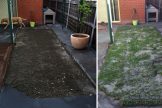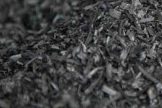
Worms are fabulous little creatures. By eating their way through refuse and detritus, they manage to make the most nutritious and enriching fertiliser suitable for all your garden and potted plants, which won’t harm your plants because it is so gentle and natural. Worms can eat up to their weight each day in organic waste scraps, which can add up to a bit if you have the right conditions. Even better than finished compost, the worm ‘poo’, known as vermicast, is safe to use on all plants. Keeping a worm farm is ideal for householders who do not have the space outside for a traditional compost bin, yet still want to get rid of household scraps and peelings organically. Worm farms can even be kept inside! Read on for more great worm tips.
Setting up a Worm Farm
What You’ll Need
Worms function best in cool, moist and dark conditions, so your worm farm needs to be set up to imitate these conditions. The best worm farms are ones where the worms have room to move; where there is a drainage system so excess water can drain; and where you can get at the finished compost easily, without the need to disturb the worms much. It needs protection from the weather so that extremes of temperatures won’t affect the worms and the worms need to be kept dark. You can either set up your own worm composting system at next-to-no-cost, purchase a ready made one, such as the Reln Worm Factory, or convert a traditional plastic-sided compost bin.
In each case, the worms need some sort of ‘bedding’ material. These should be mainly carbon-based materials, and the easiest is shredded newspaper. Mix it together with some aged (not fresh) cow manure or compost and then lightly sprinkle it all with some fresh water. Don’t wet it too much – just enough to dampen the contents. This should all be prepared before you bring your new worms home.
The only other thing you really need is a cover for the bedding. If your worm farm does not have a lid, then some heavy Hessian, or a thick layer of wetted newspaper, cut to fit squarely in the box is needed. It is under this layer that you add your food scraps. Other items you may have around which are useful is some insect screening, preferably of the plastic kind, so it doesn’t rot. This is to stop the worms accidently dropping into the layer collecting the worm ‘wee’. A small tap or even a short length of old garden hose can be used to collect the liquid wee. The type of box that you set up as a farm is the only difference between systems.
Putting it together
The No-Frills, Low-Cost Variety
To set up your own, you can use white polystyrene broccoli boxes, such as those used in fruit shops. Greengrocers usually have heaps to get rid of and so they’re yours for the asking. Get two of them. Ask for the ones with a lid as they are ideal.
What you need to do
Put lots of small holes with a screwdriver on the bottom of ONE of your boxes and line it with the insect screening. This becomes your TOP box. The other box is left without holes unless you choose to insert a short length of hose or tap to help drain out the worm wee or juice. This becomes your BOTTOM box. If you buy a ready-made farm, the tap is included. Place the TOP box with the worms on top of the BOTTOM box.
Next comes the bedding material. Fill your TOP box about 1/4 full with moistened newspaper/compost or manure mix.
Now it’s off to buy some worms. Ordinary garden variety worms won’t do. Worms do best in the situation into which they were born and the bedding and food you add will be too rich for garden worms. Instead, purchase Reds, Tigers or Blues, often just sold as composting worms.
Add your worms to your bedding in the TOP box and watch as they wriggle down out of sight.
Let your worms settle in for a few days. Then add some food scraps to the TOP box. These scraps could include things such as:
- Kitchen scraps like leftovers (cooked vegetables and stewed fruit leftovers),
- Fruit peelings (avoid citrus fruits – the worms find their smell too strong),
- Grass clippings (lightly sprinkled),
- Autumn leaves (small amounts)
- Paper, cereal packets, pizza boxes, junk-mail, (all torn up and soaked in water beforehand)
- Tea-bags, coffee grinds, tea and coffee dregs
- Hair clippings and vacuum cleaner dust
- Vegetable scraps and peelings (avoid onion)
- Crushed egg shells (these are excellent to help maintain the pH of the bedding)
- Aged manures
Since worms don’t have teeth, make life easier for them by making the bits you feed them as small as possible. This can be done by chopping up into fine bits; or, in the case of kitchen peelings, or coarse stems like those of broccoli, putting them into the freezer. After they have frozen, defrost them when you need them and they will be a lot softer and easier for the worms to digest. Worms will eat things like bread, meat and cheese, but these sorts of foods can also attract rodents, cockroaches, flies and other non-desirables, so they are best avoided.
Worm Care Tips
- Don’t overfeed your worms. Start by putting a small amount in one corner underneath some newspaper. See how long it takes your worms to break it down. This should give you an idea of how much your worms can handle at one time. Place your food scraps in a different spot each time. Too much food will rot and make the conditions unpleasant for your worms.
- Don’t forget your worms. Make sure that the bedding material does not dry out. Over the weeks, the worm wee will collect in the BOTTOM box. You can mix this with water (to the colour of weak tea) and water it on your garden. Over the months, a layer of worm castings will build up in the bottom of the TOP box.
- Collecting the vermicast: carefully remove a small amount from the worm bedding. Mound it up into a cone shape. Any worms present will wriggle away from the light and collect in the centre of the vermicast. Take the vermicast away and put the worms back in to the farm.
- Using vermicast: it is a strong but gentle fertiliser so you won’t need much of it around any plant. Sprinkle it over the soil around your plants and water in. Cover it with mulch so that it best retains its moisture and nutrient content. Your plants will love it!





